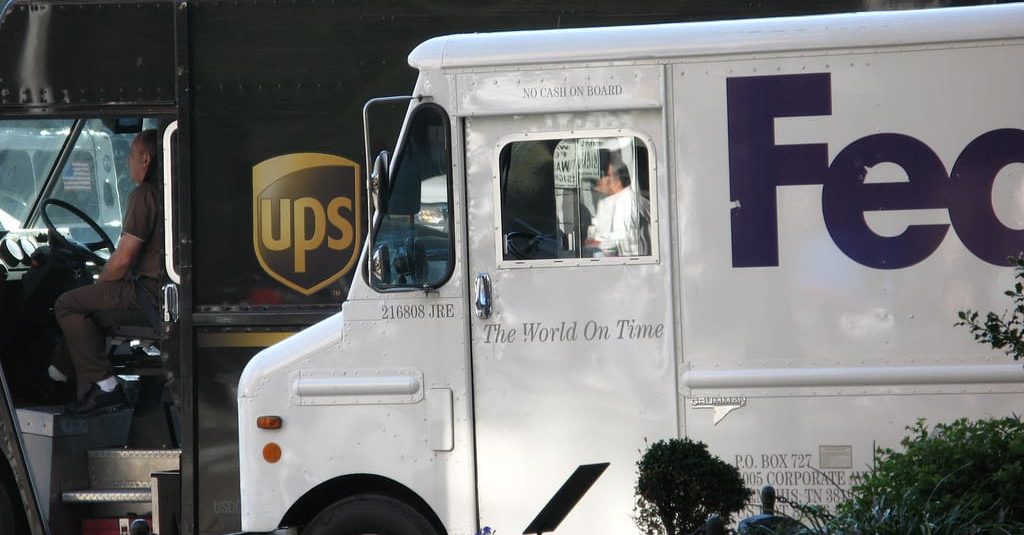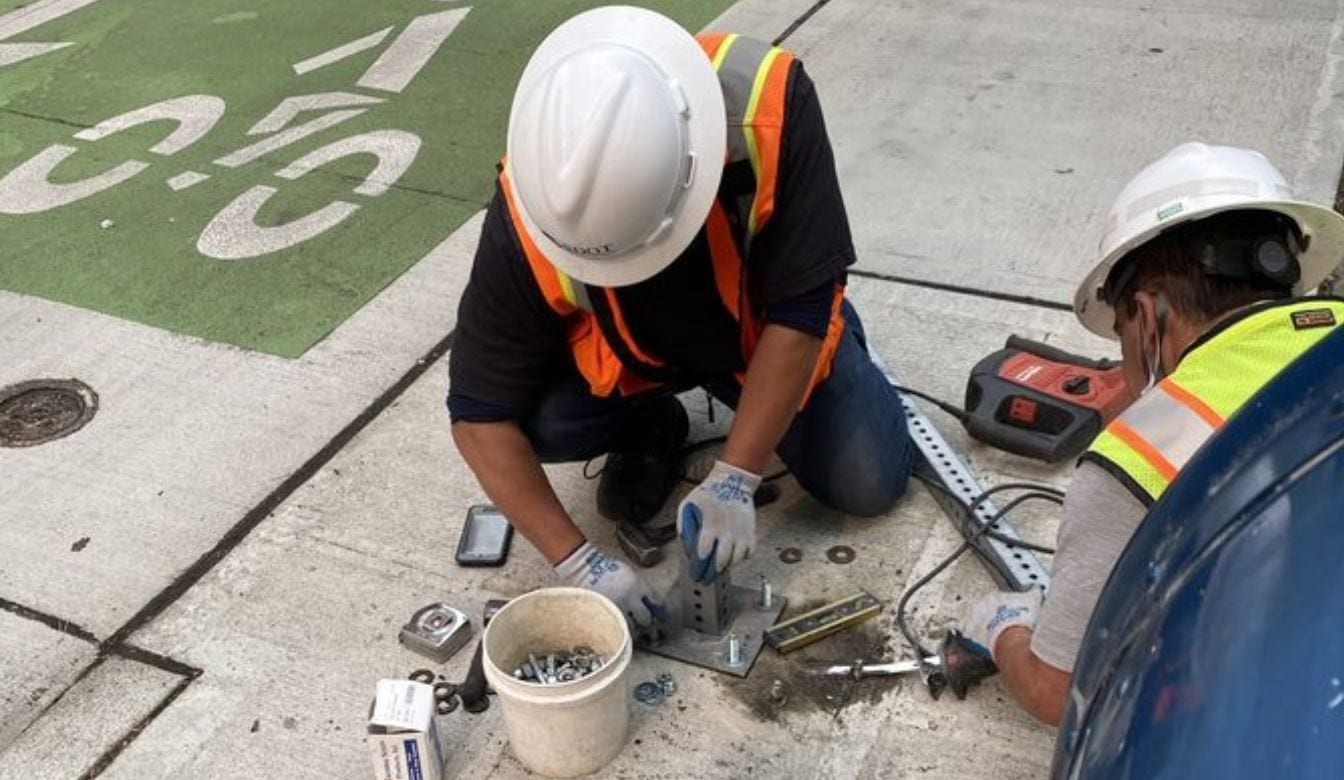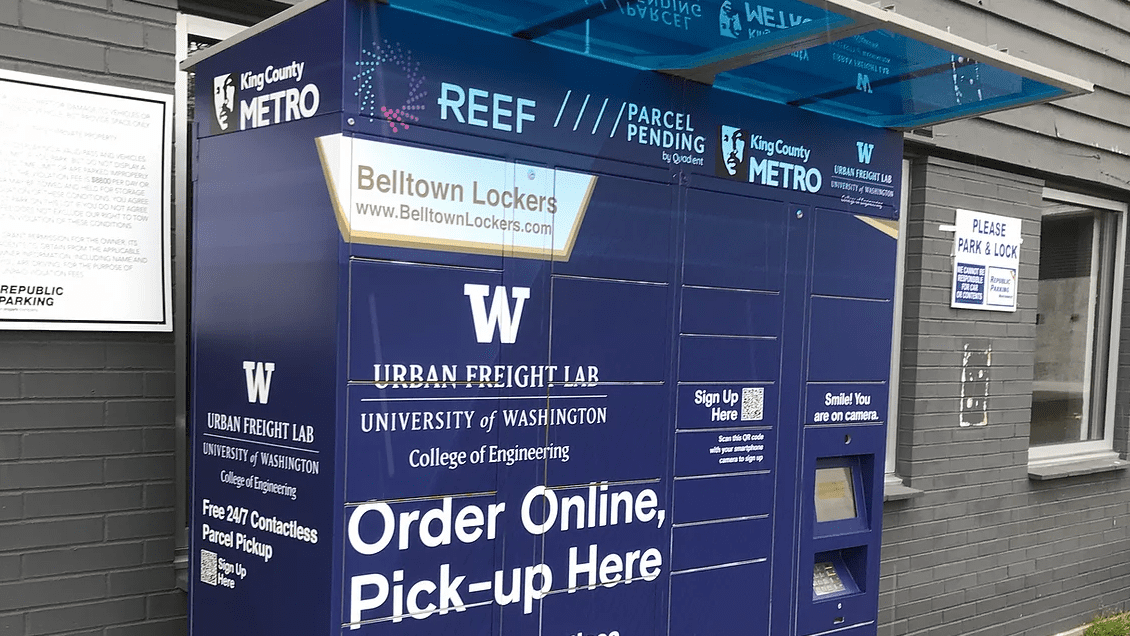 Study aims to reduce the time that delivery drivers actively search for a places to load and unload by 20%. Photo credit: SDOT Flickr
Study aims to reduce the time that delivery drivers actively search for a places to load and unload by 20%. Photo credit: SDOT Flickr The way people shop is changing. More and more we have everything from groceries, to medication, to furniture delivered to our homes.
As demand for this service grows, so does the number of delivery trucks in our transportation system. The question becomes, how do we keep customers happy, keep people and goods moving, keep our city livable, and meet Seattle’s climate change goals?
That’s a question we’re working with the University of Washington’s Urban Freight Lab (UFL) to investigate.
We’re a part of a study that looks at eight blocks of the Belltown neighborhood to better understand current delivery patterns and help make them more efficient and less polluting.
The Belltown study is a three-year $1.5M project led by UFL and funded by the U.S. Department of Energy’s Office of Energy Efficiency and Renewable Energy to develop technologies to reduce fuel consumption in the urban goods delivery system.
If you haven’t heard of UFL, it’s a ground-breaking partnership between many public agencies and private companies including retail (Amazon, Nordstrom), shipping and distribution (PepsiCo, UPS, USPS), real estate (Terreno Realty Corporation, REEF), and vehicle manufacturing (Coaster Cycles, Ford Motor Company, General Motors, Michelin). In addition to our study location in Belltown, the City of Bellevue Department of Transportation has an active pilot in their downtown.
The Belltown study aims to do the following:
- Reduce the time that drivers actively search for a places to load and unload by 20%
- Reduce the time a delivery vehicle is parked by 30%
- Increase occupancy in Commercial Vehicle Load Zones to 80% (These load zones are on-street parking for freight goods and service delivery vehicles)
A recent analysis suggests that 28% of delivery drivers’ time in downtown Seattle is spent looking for parking, which is about an hour and ten minutes a day! Reducing that time by 20% would lead to a significant reduction in fuel consumption and greenhouse gas emissions.
To do this, researchers are using a two-pronged approach:
1 – Create a digital tool to help delivery drivers find open spaces:

If drivers know where open load zone spaces are located, they could spend less time looking for a spot to unload, and reduce fossil fuel consumption.
Last fall we installed in-ground detection sensors in Commercial Vehicle Load Zones to provide real-time parking occupancy. These sensors use a small magnetometer that detects when a vehicle occupies the space using magnetic and light detection.
The data then populates a new mobile application developed to inform delivery drivers of available parking locations near destinations.
Given enough data, the app will “learn” and ultimately be able predict when parking becomes available, based on time of day and day of the week — reducing time spent looking for parking.
2 – Increase delivery density with new delivery lockers:

The fewer stops a delivery driver has to make, the less time they have to spend circling, looking for parking, and contributing to traffic and emissions.
The study introduced a new set of lockers open and available to all major carriers, including Amazon, UPS, USPS, FedEx, and more. This way, a driver can efficiently deliver multiple packages at one location rather making multiple stops. The Urban Freight Lab recently installed one such locker at the Republic Parking lot across from KOMO Plaza at 5th Ave. N. and John St. providing nearby residents and tenants with free 24/7 contact-free parcel pickup from all carriers.
If you live nearby, you can get your packages delivered there and pick them up at your convenience within seven days. To find out more about deliveries to the lockers or to sign up to participate, check out Belltown Lockers.
This installation is a follow-up to a 2018 pilot test at the Seattle Municipal Tower, which saw an 80% reduction in delivery time inside the building by using the locker system. By increasing delivery density, parcel lockers can reduce dwell time, congestion, and lost or stolen packages and increase Commercial Vehicle Load Zone parking turnover rates.
The study began in November 2018 and runs through November 2021. Results are expected in early to mid-2022.
- Keep up with this project on the University of Washington’s Urban Freight Lab website.
- Sign up to participate and join the locker study.